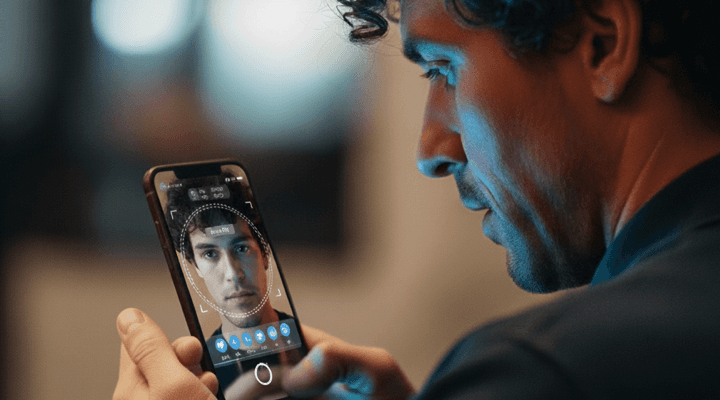The Power of Art: Therapeutic Activities for Mental Wellness
May 5, 2025
Discover the therapeutic power of art for mental wellness. Explore creative activities to enhance your mental health on the Upvio Blog.

The Growing Recognition of Art as a Therapeutic Tool
In today's fast-paced world, the pursuit of mental wellness has become increasingly vital. Amidst this quest, the transformative power of art is gaining recognition as a profound therapeutic tool. From fostering relaxation to aiding emotional release, artistic activities offer a unique pathway to inner healing and self-discovery.
The Evolution of Art Therapy
Art therapy has evolved significantly over the decades. From its origins in the early 20th century it has a widespread acceptance today. Pioneers such as Margaret Naumburg and Edith Kramer initially used it as a form of psychoanalysis. Today it has expanded into a multidisciplinary field encompassing psychology, counseling, and creative arts therapies.
The Science Behind Art and Mental Health
Recent studies have delved into the neuroscientific basis of art therapy, revealing how creative activities affect the brain. Research shows that engaging in art can stimulate the release of dopamine, a neurotransmitter associated with pleasure and reward. This neurological response not only enhances mood but also contributes to stress reduction and improved cognitive function.
The Healing Power of Art
Art as Therapeutic Expression
Art therapy harnesses the creative process to improve and enhance the physical, mental, and emotional well-being of individuals. It provides a non-verbal means of expression, making it accessible to people of all ages and backgrounds.
Psychological Benefits of Art
Engaging in art can significantly reduce stress levels, stimulate the brain, and enhance cognitive abilities. It taps into emotions and memories, offering a therapeutic outlet that words alone cannot always convey.
Promoting Relaxation Through Art
Activities like painting, drawing, or sculpting allow individuals to enter a state of flow. A state where worries fade away and creativity flourishes. This process promotes mindfulness and can lead to profound emotional insights and healing.
Exploring Art Therapy Techniques
Diverse Techniques in Art Therapy
Art therapy encompasses a variety of techniques tailored to meet diverse therapeutic needs. These include painting, drawing, sculpture, collage, and other forms of visual expression.
Therapeutic Benefits of Art Techniques
Each technique engages different parts of the brain and offers unique therapeutic benefits. For example, painting may help process complex emotions, while sculpture can facilitate tactile exploration and symbolic representation.
Exploring Artistic Techniques
Through painting, individuals can externalize their internal worlds, using colors and textures to convey feelings. Drawing can serve as a form of meditation, focusing the mind and enhancing concentration. Collage allows for the integration of different materials and ideas, fostering creativity and problem-solving skills.
Incorporating Art Into Daily Practice
Integrating art into daily routines doesn't require special skills or extensive time commitments. Simple practices like keeping a sketchbook or doodling during breaks, can foster creativity and promote mental well-being.
Creating a designated art space can enhance focus and motivation. It can be a corner of a room or a small studio. Personalize this space with inspiring artworks, materials, and tools that invite creative exploration.
Art can complement self-care rituals. Journaling, meditation, or yoga are adding a visual dimension to emotional processing and relaxation. It serves as a gentle reminder to prioritize creativity and introspection amidst daily responsibilities.
Integrating Technology with Art Therapy
In the digital age, the practice management system has opened new avenues for art therapy. Telemedicine software and remote therapy monitoring enable therapists to conduct sessions virtually, making art therapy activities accessible to individuals regardless of their geographical location. Practice management software for therapists also supports remote patient monitoring, allowing therapists to track progress and tailor interventions more effectively.
Practical Tips for Starting Art Therapy at Home
For those interested in exploring art therapy independently, there are several practical steps to consider. Begin by gathering basic art supplies such as paper, pencils, paints, and clay. Experiment with different techniques, starting with simple exercises to build confidence and gradually exploring more complex forms of expression.
The Role of Art in Community Wellness Programs
Art therapy extends beyond individual practice to community-based initiatives and wellness programs. Schools, hospitals, and community centers often integrate art activities into their services. This promotes mental health and emotional well-being among diverse populations. These programs not only foster creativity but also encourage social interaction and support networks.
Case Studies: Artistic Journeys to Wellness
Meet Sarah, a busy professional who found solace in painting during stressful times at work. Her artistic journey provided an outlet for stress. Also uncovered hidden talents and renewed her passion for creativity.
Tom struggled with anxiety for years until he discovered the therapeutic benefits of sculpting. Molded by his hands, the clay became a tangible representation of his emotions. This was offering a sense of control and empowerment.
These stories illustrate how artistic expression transcends words, offering individuals a safe space to explore, heal, and grow. Art becomes a companion in their journey towards mental wellness, providing insights and breakthroughs that traditional therapies sometimes cannot.
Conclusion: Embracing Creativity for Mental Health
Artistic activities offer more than just aesthetic pleasure—they are powerful tools for mental wellness. From reducing stress to fostering self-awareness, creativity plays a crucial role in maintaining a balanced and healthy mind.
As we navigate modern life, integrating art into our daily lives can nurture resilience. It also enhances emotional well-being. It encourages us to explore new perspectives, express our inner worlds, and find peace amidst chaos.
Whether through painting, sculpture, or digital art, everyone can benefit from incorporating artistic activities into their routines. By embracing creativity, we not only enrich our lives. We also embark on a journey of self-discovery and healing.
Keep exploring with these related resources:
Explore Vitals AI for remote, camera-based vital signs monitoring.
Read more in Enhancing Emotional Awareness and Communication in Therapy with Emotion Charts.
Read more in Understanding the Role of Practice Management Software.
Read more in Best Practices for Documentation in Healthtech Platforms.
Explore Optimizing Workflow with Medical Practice Management Software.


